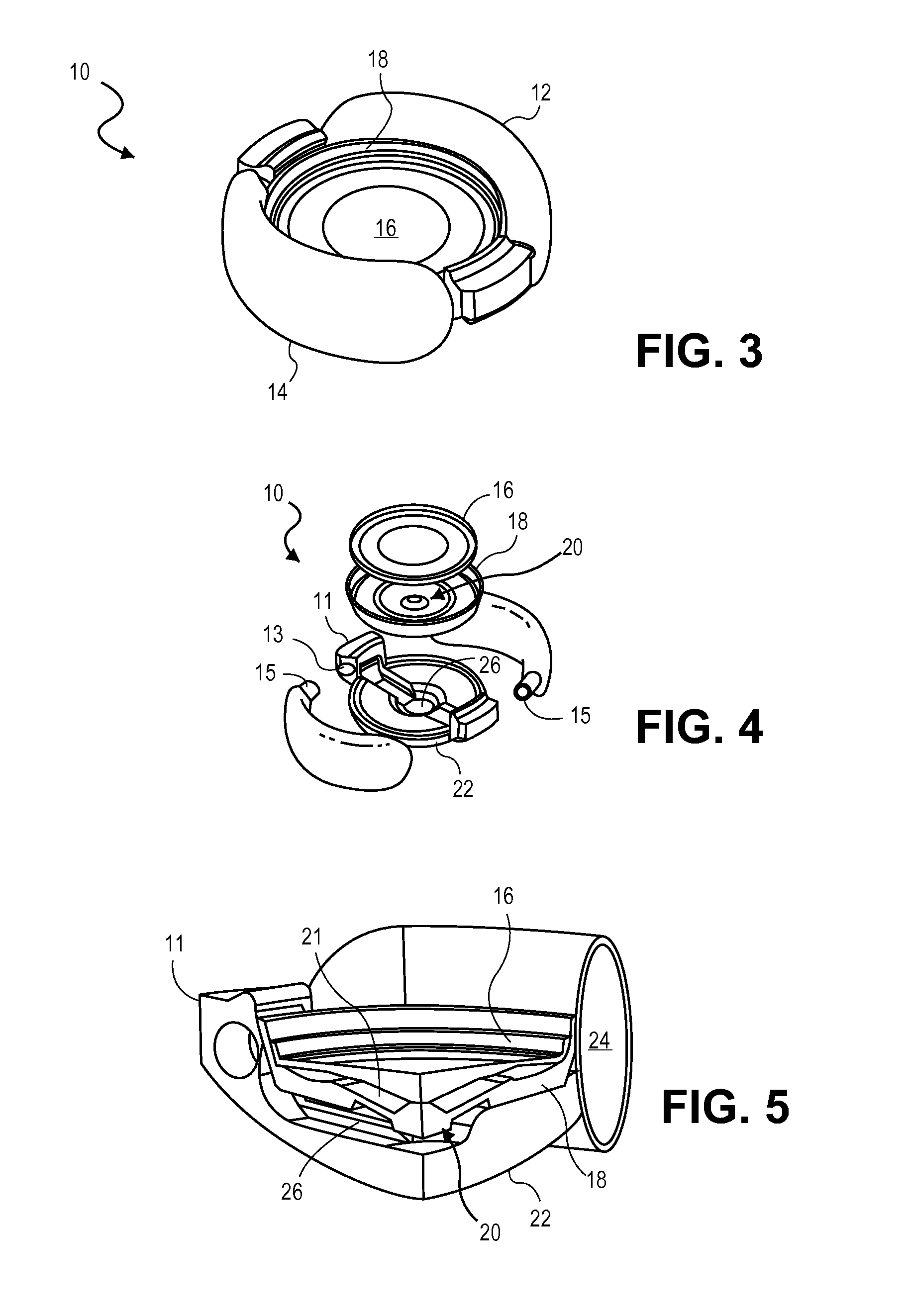Intraocular Lenses and Methods of Accounting for Capsule Size Variability and Post-Implant Changes in the Eye
a technology of intraocular lenses and capsules, applied in intraocular lenses, medical science, prosthesis, etc., can solve the problems of wasting a large amount of force(s) a capsular bag is capable of generating, and the ability to adapt is no longer possible, and the effect of increasing the size of the capsul
- Summary
- Abstract
- Description
- Claims
- Application Information
AI Technical Summary
Benefits of technology
Problems solved by technology
Method used
Image
Examples
Embodiment Construction
[0065]The disclosure relates generally to lenses and methods of accounting for patient variability in lens capsule size, inaccurate measurements of a capsule, and / or changes that can occur in the eye or to the intraocular lens after implanting the intraocular lens in the capsule. Variability in capsule sizes and inaccurate measurements of a capsule can lead to a mismatch in size between the intraocular lens and the capsule. Changes that can occur in the eye after removal of the native crystalline lens followed by implantation of an intraocular lens include changes to the lens capsule. Examples of changes to the lens capsule include, without limitation, capsular contraction (characterized by a fibrotic response), capsular stiffening, growth of the capsule, thickening or thinning of the capsule, any type of capsular healing response, capsular expansion due to healing or a torn or oblong capsularhexis, etc. While capsular contraction is primarily referred to herein, the intraocular len...
PUM
 Login to View More
Login to View More Abstract
Description
Claims
Application Information
 Login to View More
Login to View More - R&D
- Intellectual Property
- Life Sciences
- Materials
- Tech Scout
- Unparalleled Data Quality
- Higher Quality Content
- 60% Fewer Hallucinations
Browse by: Latest US Patents, China's latest patents, Technical Efficacy Thesaurus, Application Domain, Technology Topic, Popular Technical Reports.
© 2025 PatSnap. All rights reserved.Legal|Privacy policy|Modern Slavery Act Transparency Statement|Sitemap|About US| Contact US: help@patsnap.com



